Stanley David Chapman (born 1935) is a British historian. His works have focused primarily on industrial history. [1]
In 1960 he was awarded an MA degree from Nottingham University and his thesis was titled ‘William Felkin, 1795–1874’. He earned his PhD from the University of London in 1966, his thesis being on ‘The Midlands Cotton and Worsted Spinning Industry, 1769–1800’. [2] From 1968 until 1973 he was lecturer at Nottingham University and in 1973 he was appointed Pasold Reader in Textile History at Nottingham. [1]

The Industrial Revolution was the transition to new manufacturing processes in Great Britain, continental Europe, and the United States, in the period from about 1760 to sometime between 1820 and 1840. This transition included going from hand production methods to machines, new chemical manufacturing and iron production processes, the increasing use of steam power and water power, the development of machine tools and the rise of the mechanized factory system. The Industrial Revolution also led to an unprecedented rise in the rate of population growth.

Sir Richard Arkwright was an English inventor and a leading entrepreneur during the early Industrial Revolution. He is credited as the driving force behind the development of the spinning frame, known as the water frame after it was adapted to use water power; and he patented a rotary carding engine to convert raw cotton to 'cotton lap' prior to spinning. He was the first to develop factories housing both mechanised carding and spinning operations.
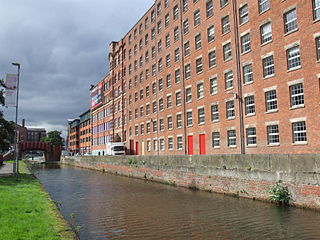
A cotton mill is a building that houses spinning or weaving machinery for the production of yarn or cloth from cotton, an important product during the Industrial Revolution in the development of the factory system.
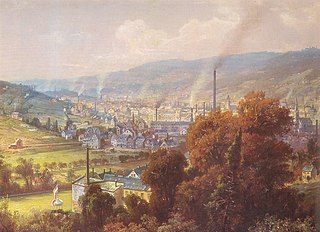
Textile manufacture during the Industrial Revolution in Britain was centred in south Lancashire and the towns on both sides of the Pennines. In Germany it was concentrated in the Wupper Valley, Ruhr Region and Upper Silesia, in Spain it was concentrated in Catalonia while in the United States it was in New England. The main key drivers of the Industrial Revolution were textile manufacturing, iron founding, steam power, oil drilling, the discovery of electricity and its many industrial applications, the telegraph and many others. Railroads, steam boats, the telegraph and other innovations massively increased worker productivity and raised standards of living by greatly reducing time spent during travel, transportation and communications.

The textile industry is primarily concerned with the design, production and distribution of yarn, cloth and clothing. The raw material may be natural, or synthetic using products of the chemical industry.
India was the one of the largest economies in the world, for about two and a half millennia starting around the end of 1st millennium BC and ending around the beginning of British rule in India.
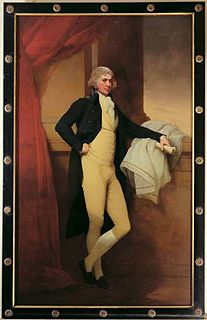
Samuel Oldknow (1756–1828) was an English cotton manufacturer.
The history of capitalism is diverse. The concept of capitalism has many debated roots, but fully fledged capitalism is generally thought by scholars to have emerged in Northwestern Europe, especially in Great Britain and the Netherlands, in the 16th to 17th centuries. Over the following centuries, capital accumulated by a variety of methods, at a variety of scales, and became associated with much variation in the concentration of wealth and economic power. Capitalism gradually became the dominant economic system throughout the world. Much of the history of the past 500 years is concerned with the development of capitalism in its various forms.

Mexico's economic history has been characterized since the colonial era by resource extraction, agriculture, and a relatively underdeveloped industrial sector. Economic elites in the colonial period were predominantly Spanish born, active as transatlantic merchants and silver mine owners and diversifying their investments with the landed estates. The largest sector of the population was indigenous subsistence farmers, who lived mainly in the center and south.
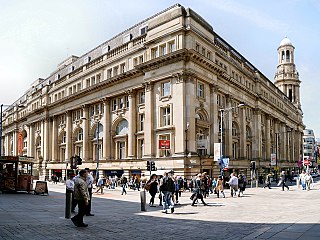
Cottonopolis was a 19th-century nickname for Manchester, as it was a metropolis and the centre of the cotton industry.
The Manchester warehouse which we lately visited, was a building fit for the Town Hall of any respectable municipality; a stately, spacious, and tasteful edifice; rich and substantial as its respectable proprietors, the well-known firm of Banneret and Co. There are nearly a hundred such buildings in Manchester; –not so large, perhaps, for this is the largest; but all in their degree worthy of Cottonopolis.
Business history is a historiographical field which examines the history of firms, business methods, government regulation and the effects of business on society. It also includes biographies of individual firms, executives, and entrepreneurs. It is related to economic history. It is distinct from "company history" which refers to official histories, usually funded by the company itself.
The Indian economy under the British Raj describes the economy of India during the years of the British Raj, from 1858 to 1947. According to historical GDP estimates by economist Angus Maddison, India's GDP during the British Raj grew in absolute terms but declined in relative share to the world.

The economic history of Scotland charts economic development in the history of Scotland from earliest times, through seven centuries as an independent state and following Union with England, three centuries as a country of the United Kingdom. Before 1700 Scotland was a poor rural area, with few natural resources or advantages, remotely located on the periphery of the European world. Outward migration to England, and to North America, was heavy from 1700 well into the 20th century. After 1800 the economy took off, and industrialized rapidly, with textile, coal, iron, railroads, and most famously shipbuilding and banking. Glasgow was the centre of the Scottish economy. After the end of the First World War in 1918, Scotland went into a steady economic decline, shedding thousands of high-paying engineering jobs, and having very high rates of unemployment especially in the 1930s. Wartime demand in the Second World War temporarily reversed the decline, but conditions were difficult in the 1950s and 1960s. The discovery of North Sea oil in the 1970s brought new wealth, and a new cycle of boom and bust, even as the old industrial base had decayed.

Scotland in the modern era, from the end of the Jacobite risings and beginnings of industrialisation in the 18th century to the present day, has played a major part in the economic, military and political history of the United Kingdom, British Empire and Europe, while recurring issues over the status of Scotland, its status and identity have dominated political debate.
The textile industry in India traditionally, after agriculture, is the only industry that has generated huge employment for both skilled and unskilled labour. The textile industry continues to be the second-largest employment generating sector in the India. It offers direct employment to over 35 million in the country. According to the Ministry of Textiles, the share of textiles in total exports during April–July 2010 was 11.04%. During 2009–2010, the Indian textile industry was pegged at US$55 billion, 64% of which services domestic demand. In 2010, there were 2,500 textile weaving factories and 4,135 textile finishing factories in all of India. According to AT Kearney’s ‘Retail Apparel Index’, India was ranked as the fourth most promising market for apparel retailers in 2009.
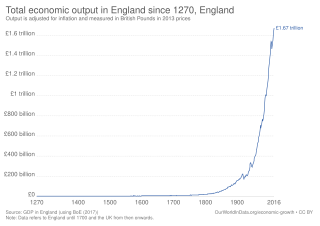
The economic history of the United Kingdom relates the economic development in the British state from the absorption of Wales into the Kingdom of England after 1535 to the modern United Kingdom of Great Britain and Northern Ireland of the early 21st century.

Thy Industrial Revolution in Scotland was the transition to new manufacturing processes and economic expansion between the mid-eighteenth century and the late nineteenth century. By the start of the eighteenth century, a political union between Scotland and England became politically and economically attractive, promising to open up the much larger markets of England, as well as those of the growing British Empire, resulting in the Treaty of Union of 1707. There was a conscious attempt among the gentry and nobility to improve agriculture in Scotland. New crops were introduced and enclosures began to displace the run rig system and free pasture. The economic benefits of union were very slow to appear, some progress was visible, such as the sales of linen and cattle to England, the cash flows from military service, and the tobacco trade that was dominated by Glasgow after 1740. Merchants who profited from the American trade began investing in leather, textiles, iron, coal, sugar, rope, sailcloth, glass-works, breweries, and soap-works, setting the foundations for the city's emergence as a leading industrial center after 1815.
Joseph Nasmith was a British consulting textile engineer, editor of the Textile Recorder and author, known for his work on the history and state of the art of the textile industry, particularly cotton spinning and cotton mill construction and engineering.

Muslin, a cotton fabric of plain weave, was hand woven in the region around Dhaka, Bengal, and exported to Europe, the Middle East, and other markets, for much of the 17th and 18th centuries.
Jonathan David Chambers was a British historian.